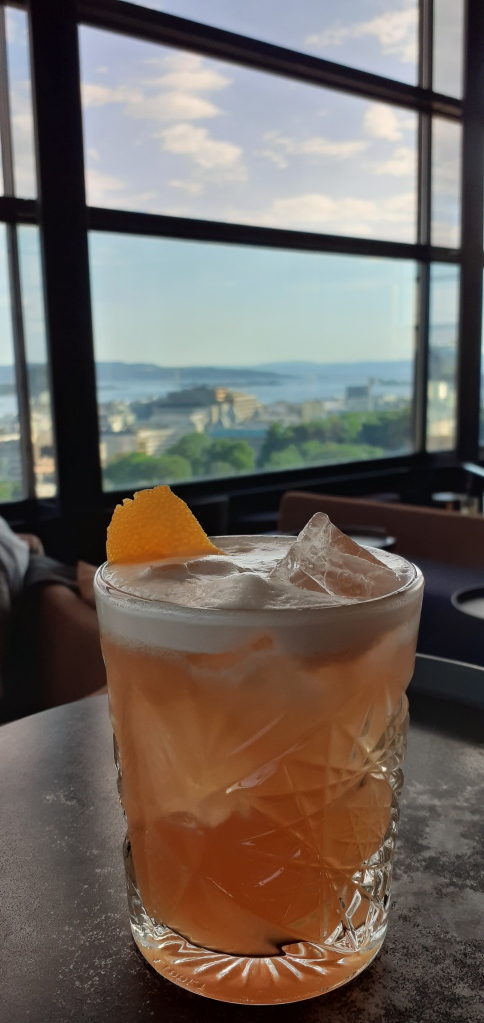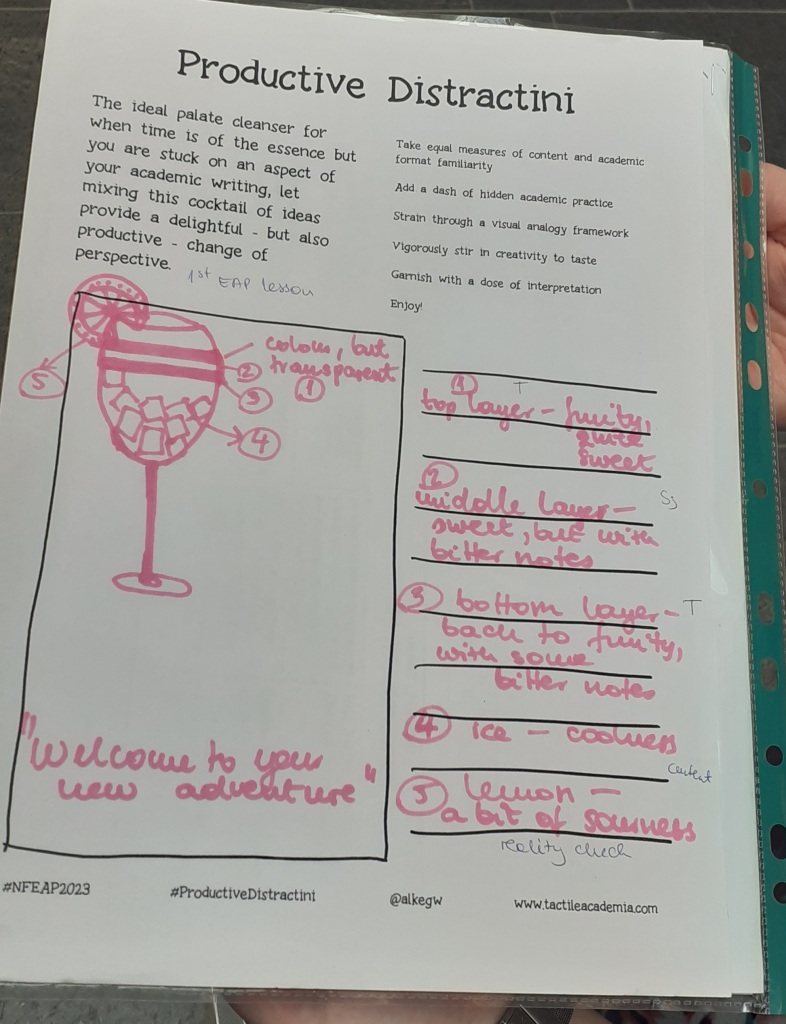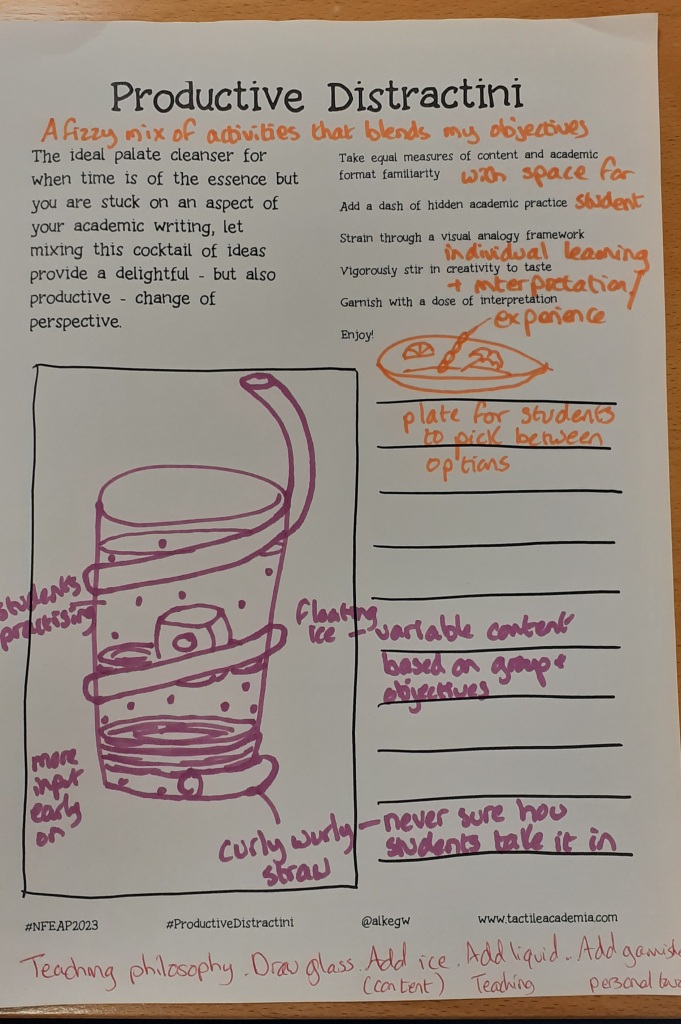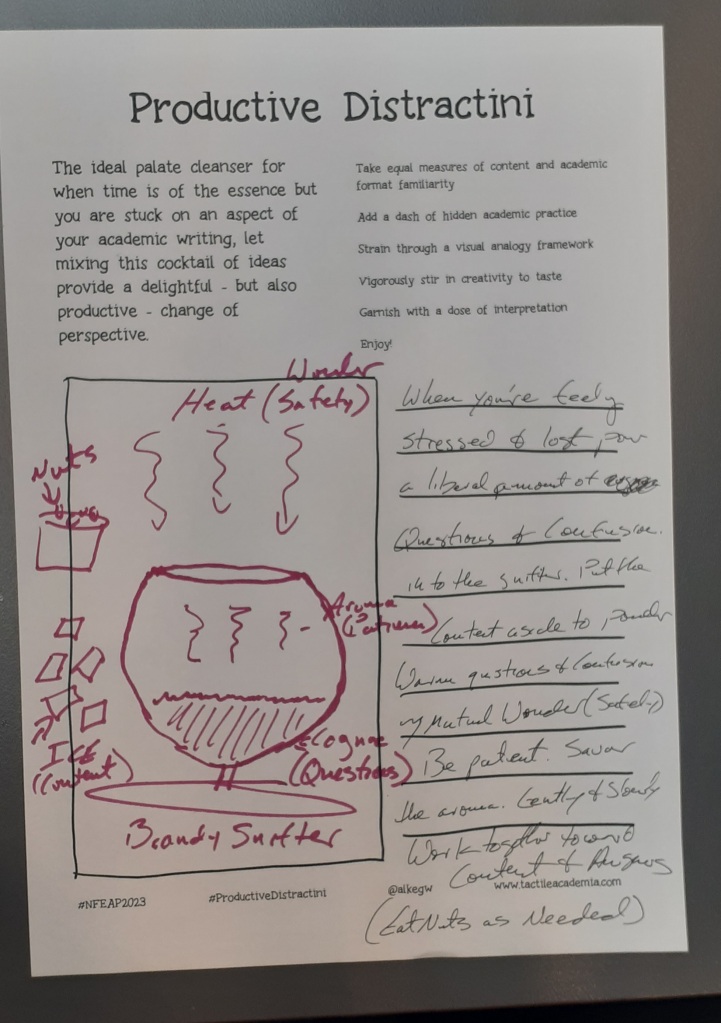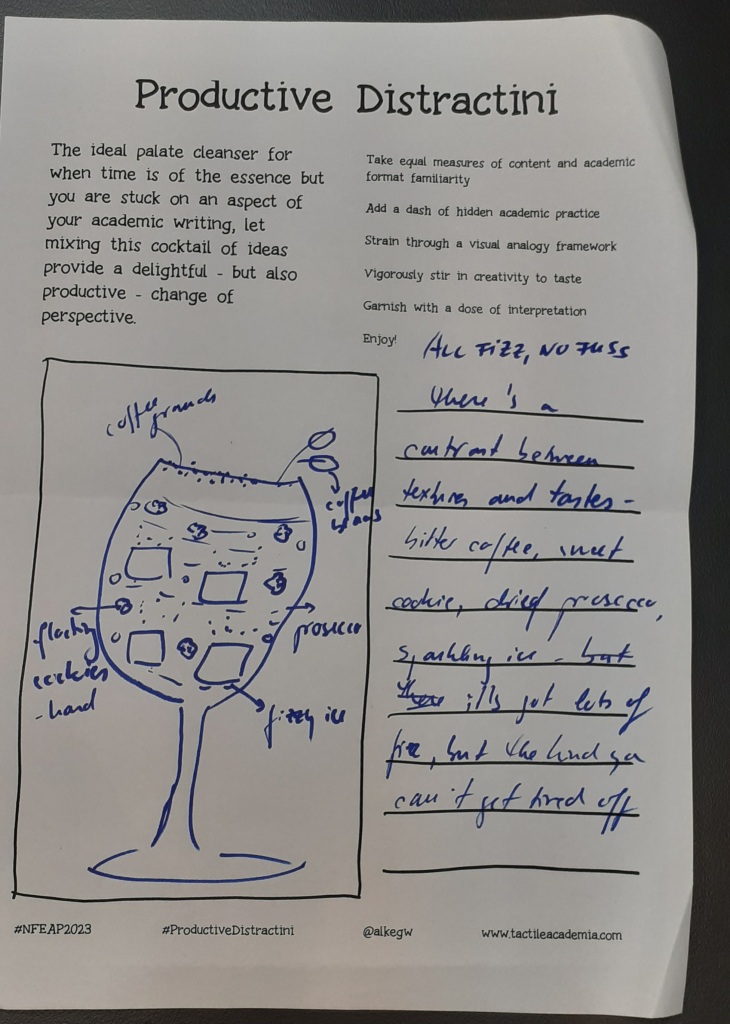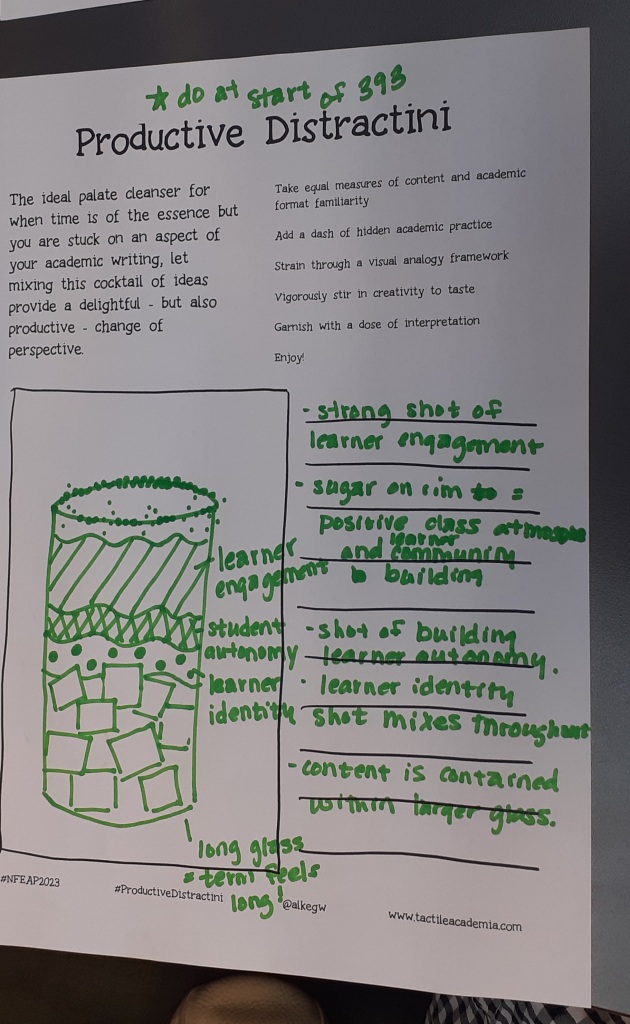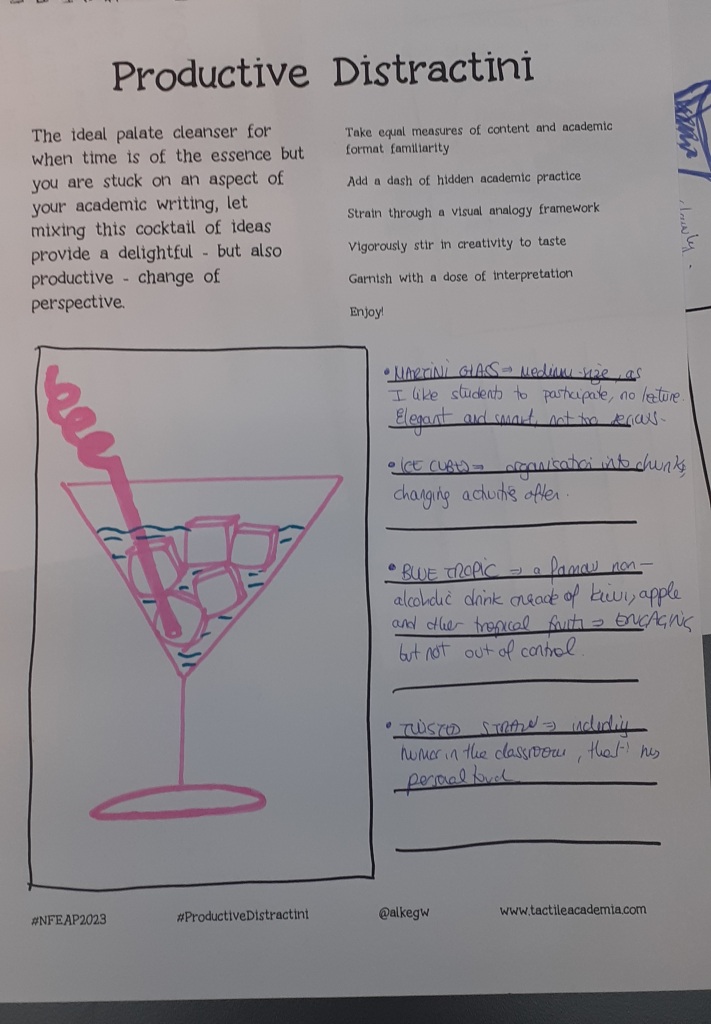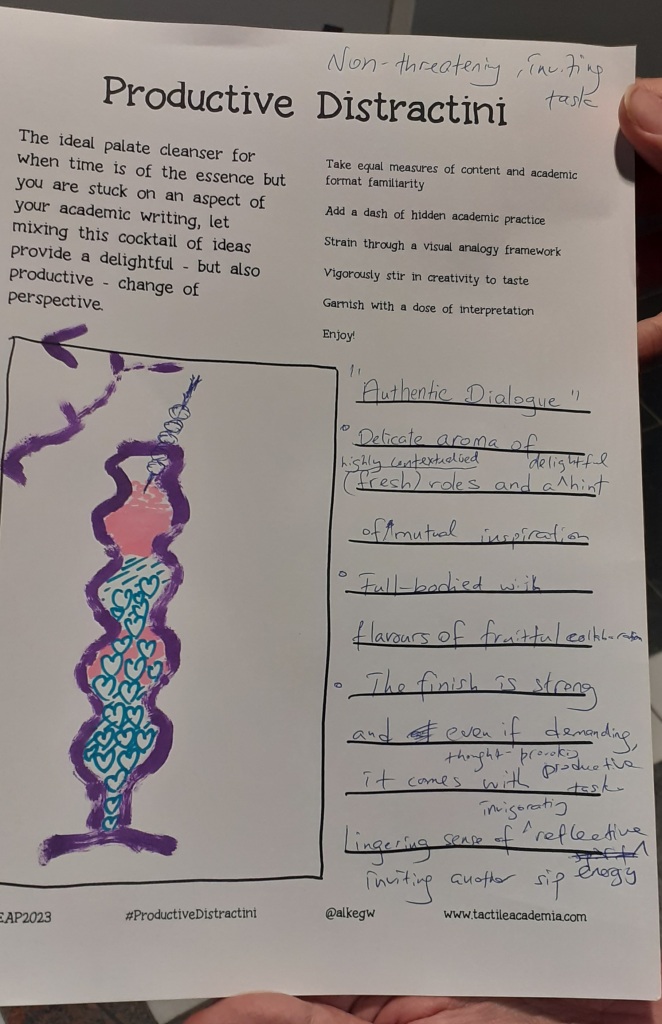Cocktails and Conferences
Is it just me, or do cocktails and conferences somehow just go together?
Yesterday, I gave a plenary presentation (read keynote) at the Norwegian Forum for English for Academic Purposes, and it is quite possible that this was my last conference in the ‘old’ field (i.e. related to teaching essay writing), because of leaving my current job (see my last post).
For this session I had a very open brief, along the lines of “our theme is ‘time’ this year, interpret this however you like, and we look forward to seeing what you come up with.” An open brief like this is either a total nightmare or a complete dream. Or maybe better: it’s a bit of both! I mean, I had no idea what they were expecting. A theoretical talk? An activity? A conceptual performance piece, a la John Cage?
(To be honest I was pretty sure they were NOT after the latter, although that might have been very interesting to do. How long do you think it would take for a group of academics to start talking if there is silence ‘on stage’? My guess is… not that long ;-))
The way I interpreted the concept of time within this was to put it in context with my way of teaching – with the activities and visual analogies that I share here on this blog – in order to pose the question of whether this is a productive use of our/the students time, or whether it is a waste of time. And I have been accused by students of just that in the past…
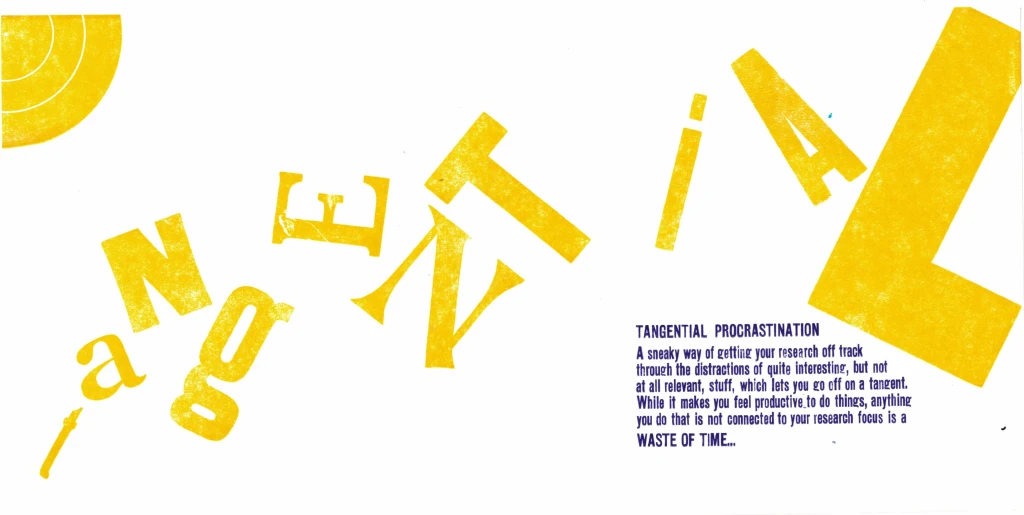
But of course in order for people who might not have come across my work before to be able to answer that question (waste of time? yay or nay?), they need to know about the work. And what better way to do that, than to get them to DO one of the activities themselves? Because it is one thing to hear about an activity and form an opinion on how that might work, doing it yourself is something quite different. (It also uses time differently, I guess.)
I decided to re-imagine something I did in 2019 at the Playful Learning Conference (which I realised I never posted about on here, sorry, that year was quite busy for me, and after that, well, we all know what happened in 2020!). As I said at the beginning, cocktails and conferences go together quite well, and I had been struck by how L&T (for Learning and Teaching) is not that far removed from G&T (of the gin and tonic ilk), and I thought wouldn’t it be fun to do something with that, and what would the perfect L&T look like. Like your teaching philosophy as a cocktail. I proposed this to the Playful Learning Conference as a workshop, along the lines of “I don’t have the budget for this, but maybe you do, and wouldn’t it be fun (and very playful), if we had a small cocktail making class, where the different ingredients represent parts of learning and teaching?” It was one of those moments of madness, where I thought this is a really neat idea, and while chances of this ever happening are slim to none, I really can’t bear to write another straight abstract this year, but would really love to go to this conference. Turns out they didn’t want a small cocktail making class. They got back to me saying they loved it so much, and could I come up with a way to scale it up so that EVERYBODY could do it!
Yes, I was speechless for a bit.
So then I had to scale a small-scale idea to be much bigger, and while in a small class you can choose to have a lot of control over what is happening (in this case the analogy), if the activity is run as the early part of the welcome dinner, where not everybody is coming at the same time, but also there are many more people, you don’t really have the option of being there giving instructions in person to every single person. So I turned it into a stand-alone activity sheet that prompted people to design their perfect L&T, which they would then take to a team of mocktail mixers (after all, we don’t need alcohol to have fun!), who would interpret it (so that it would approximate the look, but also taste good). It was a lot of fun, and there were some amazing drawings produced (and if I find them in my study, I will post some of them here).
After this little trip down memory lane, let’s get back to NFEAP and Time… thinking back to the perfect L&T, I was wondering whether I could come up with an analogous cocktail that commented on my tactile academia way of teaching and argued that while it might be a distraction, it was a purposeful and productive one. And so the Productive Distractini was born.
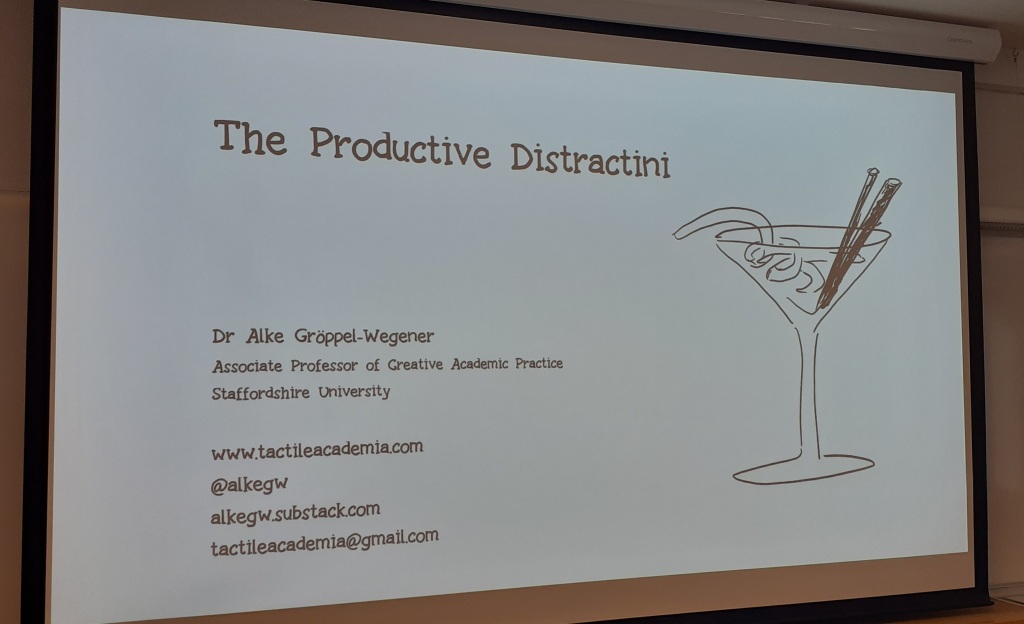
In the session, I had delegates design their own teaching philosophy as a cocktail, and – again – there were some amazing results with some really nice details. There was the curly wurly straw – because you are never sure how the students take it in, and the twisty straw showing the humour used by the personality of the teacher in the classroom, the brandy snifter that warmed the aroma of the questions in order to suggest being patient and take your time with them, the coffee granules on the rim to wake up the students to the subject, the use of a longdrink glass, because the term feels long, one delegate designed an extraordinary bubble glass and used heart-shaped ice cubes to foster authentic dialogue. There were two people who work with each other that independently of each other designed almost identical drinks (and were a bit take aback by it, but doesn’t that just show that their philosophies match, so no wonder they work well with each other?).
Afterwards I also showcased some of the analogies I have used in teaching, and showed some examples from students, but I think that it would have been more difficult to understand how much cognitive work goes into this, if I hadn’t asked them to do something similar themselves.
I hope you join me in raising a glass to learning by doing!
P.S.: I really, really hope that this was not my last conference, because it was just such a very good event. Full of lovely people and fantastic ideas. (The concept of the ‘tangential procrastination’ actually made it into one of the presentations later that day!) I hope I will find a way to be able to continue contributing to this field somehow.
P.P.S.: If you want to read the full keynote, I am planning to release this over the summer as part of a substack project I am working on. Keep your eyes peeled on here (as I will announce it once it is ready), or subscribe to ‘Creativitea and Cake’ now as part of the soft launch.

